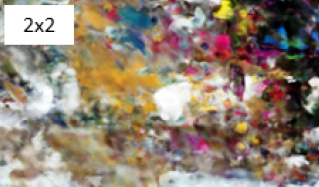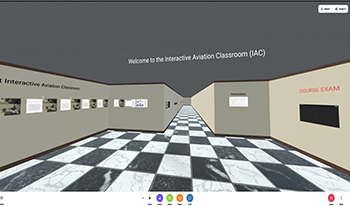
Neural Radiance Fields (NeRF) have attracted particular attention due to their exceptional capability in virtual view generation from a sparse set of input images. However, their scope is constrained by the substantial amount of images required for training. This work introduces a data augmentation methodology to train NeRF using external depth information. The approach entails generating new virtual images at different positions through the utilization of MPEG's reference view synthesizer (RVS) to augment the training image pool for NeRF. Results demonstrate a substantial enhancement in the output quality when employing the generated views in comparison to a scenario where they are omitted.

Aviation Maintenance Technicians (AMTs) play an important role in guaranteeing the safety, reliability, and readiness of aviation operations worldwide. Per Federal Aviation Administration (FAA) regulations, certified AMTs must document mechanic-related experience to maintain their certification. Currently, aviation maintenance training methods are centered around classroom instruction, printed manuals, videos, and on-the-job training. Due to the constantly evolving digital landscape, there is an opportunity to modernize the way AMTs are trained, remain current, and conduct on-the-job training. This research explores the implementation of Virtual Reality (VR) platforms as a method for enhancing the aviation training experience in the areas of aircraft maintenance and sustainability. One outcome of this research is the creation of a virtual training classroom module for aircraft maintenance, utilizing a web- based, open-source, immersive platform called Mozilla Hubs. While there is a general belief that VR enhances learning in general, very few controlled experiments have been conducted to show that this is the case. The goal of this research is to add to the general knowledge on the use of VR for training and specifically for aircraft maintenance training.

According to the CDC, over three thousand people die every year from drowning in the United States. Many of these fatalities are preventable with properly trained lifeguards. Traditional lifeguard training relies on videos and mock rescues. While these methods are important, they have their shortcomings. Videos are static and do not build muscle memory. Mock rescues are labor-intensive and potentially put others in danger. Virtual reality (VR) can be used as an alternative training tool, building muscle memory in a fully controlled and safe environment. With full control over variables such as weather, population, and other distractions, lifeguards can be better equipped to respond to any situation. The single most important aspect of life guarding is finding the victim. This head rotation skill can be practiced and perfected in VR before guards ever get onto the stand. It also allows guards to practice in uncommon but nevertheless dangerous conditions such as fog and large crowds. VR also allows the user to get immediate feedback about performance and where they can improve.